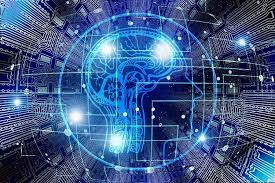Source: analyticsindiamag.com
Artificial intelligence has revolutionised every piece of technology it has touched. However, this augmentation — for better or worse — has also brought up a lot of confusion. With more and more AI application coming up in different fields, specifically in automation like Cognitive Automation, the conditions associated with it give the impression that the technology is artificially intelligent and seems to dilute the real meaning behind it. This poses a more significant problem as what qualifies as a mere application of AI can be called artificial intelligence.
When we talk about automation and AI, there is a lot of buzz around cognitive automation as it uses technology to mimic human behaviour and precisely the reason why some people call it as cognitive automation artificial intelligence.
Artificial Intelligence Vs Cognitive Automation
If one had to define artificial intelligence regarding computing, then it can be defined as the area of computer science that focuses on the creating intelligent machines that work and interact like humans with each other or with living beings. Some activities include speech recognition, learning, among others. When it comes to AI’ creating intelligent machines that work like humans’ is what one has to keep in mind from the definition. The creation process depicts the intelligence part of the device.
For example, AI in healthcare has had many applications over the years. Now, if a doctor wants to take the help of an AI, then during a particular procedure, intelligence comes into play when AI suggests which course of action to choose based on its analysis.
Intelligence, especially artificial intelligence, requires a lot of information to carry out its analysis about a process.
On the other hand, cognitive automation mimics quantitative human judgement or augments human intelligence. In short, cognitive automation imitates human thinking. If you look at the technologies in cognitive automation — like natural language processing, image processing and contextual analysis — all are more profound concepts of perceptions and judgements and are heavily influenced by AI.
If one looks at the cognitive applications, it becomes evident that the automation happens via hardcoded human-generated rules or through dense inputs.
According to François Chollet, creator of the neural network library, Keras, “Automation is, at best, robustly handling known unknowns over known tasks, which is already incredibly difficult and resource-intensive in the real world — whether engineering or data.”
Therefore, when it comes to automation, it can only work if it is made aware of the unknowns. Working with the unknown entirely on itself will only result in the failure when it comes to automation. For instance, in the healthcare sector, doctors do take the help of AI for deciding the course of action based on the suggestions made by the intelligent system. However, when it comes to automation, this technology is only here to enhance the doctor’s practice and not independently run any analysis.
Cognitive automation learns through different unstructured data and connects to creating tags, annotations and other metadata. Cognitive automation tries to find similarities between items to specific processes. It seeks to identify the mentioned items in the process and then searches for similar ones in order to connect them.
Why The Confusion?
To carry out a process by an automation system requires data. And, once enough information has been provided during the automation process, there is no requirement for humans to build an additional model to carry out the analysis further. As the new data set is provided, the automation makes more connections with the old one, which allows the cognitive automation systems to keep learning without any supervision and can continuously adjust to the new information.
Whereas for AI — it carries out its analysis after been given a different data set at the expense of a massive amount of information which has been fed to the system. This information/data is more than the required data for cognitive automation.
Outlook
In the current scenario, when one reads about the cognitive applications, the process and its workings might be similar to artificial intelligence, and thus creating confusion between the two. This happens because ultimately, cognitive automation is an application of artificial intelligence itself, which is just a little less intelligent. Cognitive automation doesn’t deal with the unknowns of a process or the real-world problems, and it can only work through them if there is data fed to it in.
